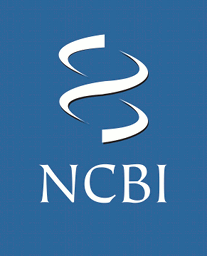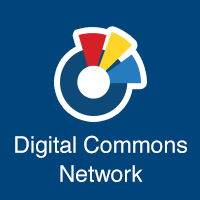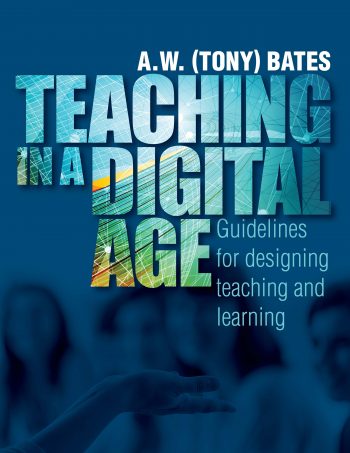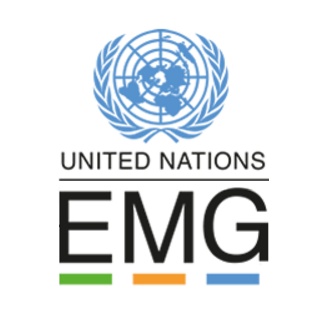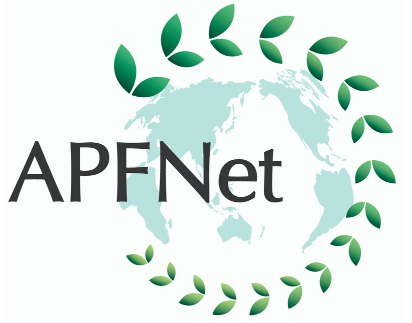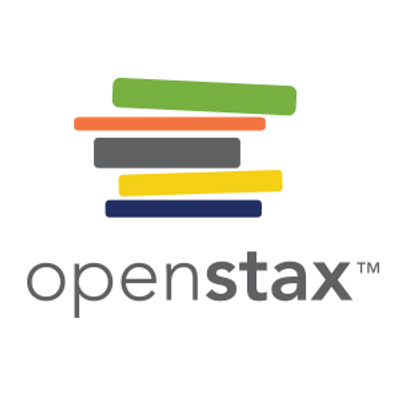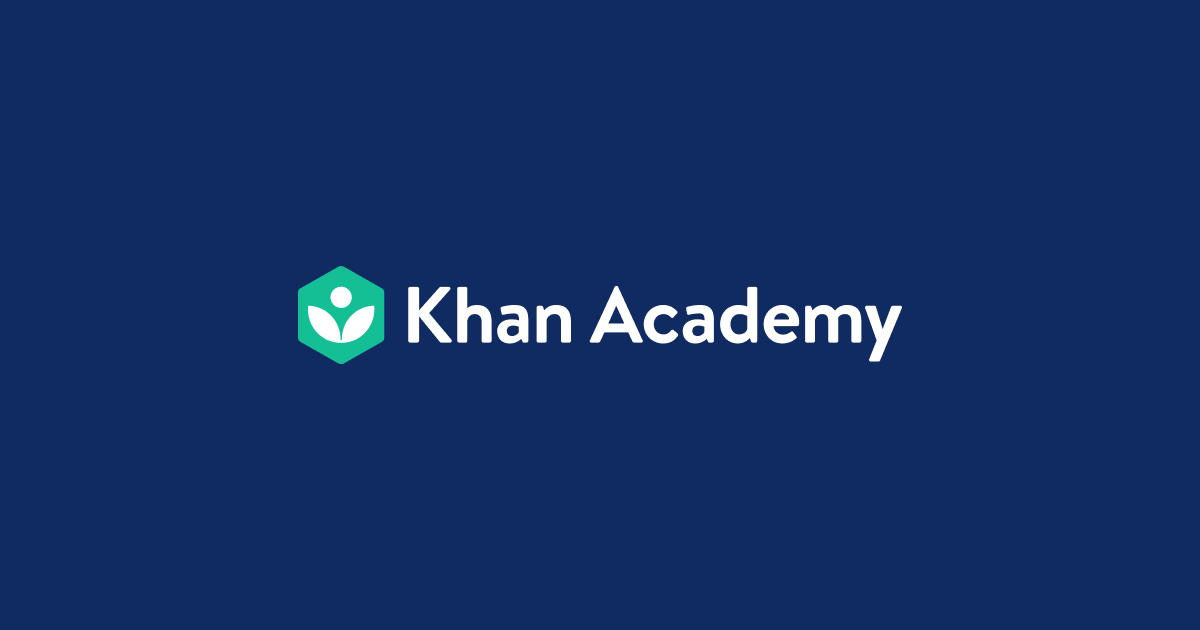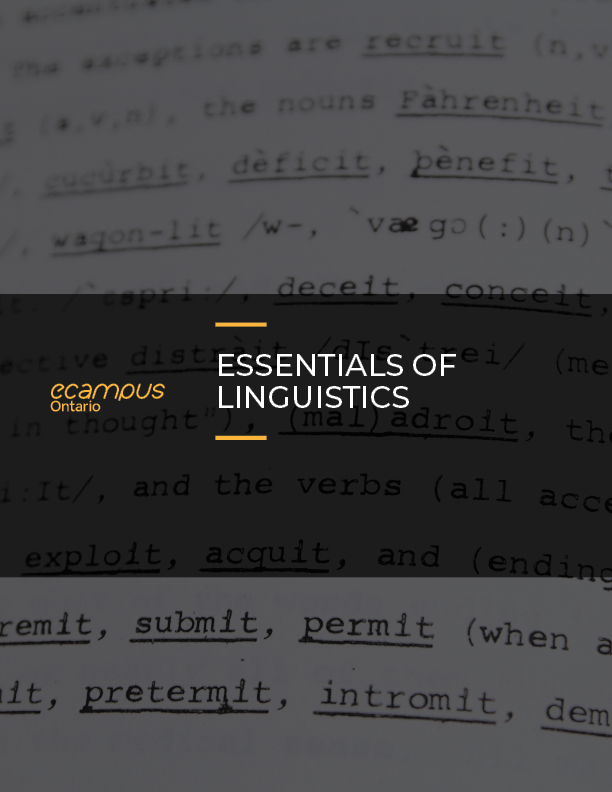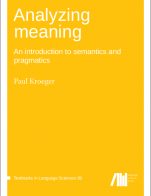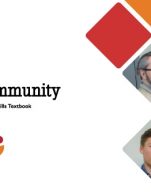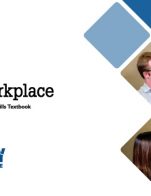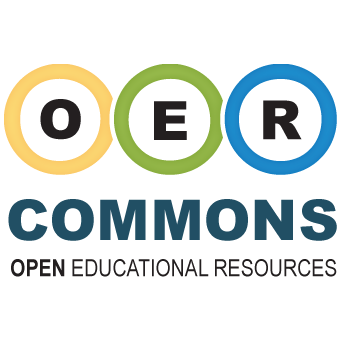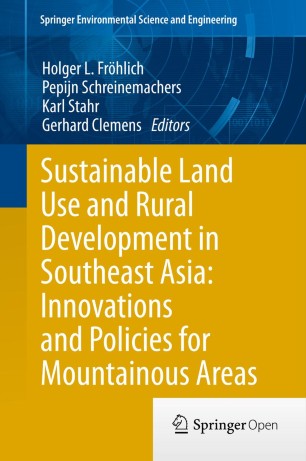by Balbin, D.J.S.
November 13, 2023
The serials section, also known as the periodical section, houses the continuing resources of the library. It includes journals, magazines, newspapers, brochures, pamphlets, and other ephemeral publications from different government and non-governmental organizations. This section is arguably one of the most difficult section to manage in terms of organizing, circulating, and acquiring the collection. In the case of Benguet State University, the section have undergone through various librarians-in-charge implementing varying organization technique. Some have tried simple labelling of spines to arrange the bound periodicals alphabetically. Some have tried classifying the periodicals using Dewey Decimal System. Some have combined both, until no actual cataloging and classification strategy was standardized. In fact, the cataloging and classification procedure included in the updated library manual only mentions the categories, location, and circulation type of materials. No formal rule was included on which standard cataloging procedure should be used in cases where the cataloger encounters special cases that basic cataloging procedures do not cover. Consequently, the lack of formalized procedures results to inconsistent cataloging format which affects the organization, access, and retrieval of bibliographic data from the library system.
As one of the relatively new librarians working in the library, the effects of poor cataloging and resource description of continuing resources could be felt from generating reports, bibliographies, and as well as when dealing with library patrons who are supposed to be looking for introductory information about a topic or probably looking for a manuscript but ended up lost in the serials section because the OPAC led them to an ephemeral or a newspaper clipping. One might argue that it is a matter of improving library users information search and retrieval skills. But it cannot also be denied that when the system is overwhelmed with keywords and the index entries entered are not standardized to an authority list, the user search might end up retrieving irrelevant documents and false drops in their search results.
To solve these problems, and not just criticize the previously implemented practices, a processing standard was developed to replace and improve the old cataloging process and eventually organizing the serials collection. For context, the newly implemented practices were initiated in 2019 when I was hired as a college librarian and the serials section was my first designation. As a new librarian with limited knowledge on the scope of the collection and institutional practice, the method implemented was not perfect, and is still slowly being implemented and improved to fit the library collection. This article aims to share the gradual progress of the implementation. As the title says, this will include the adventures and misadventures of cataloging in the section. The misadventures would not focus and aim on simply criticizing the previous practice. Instead, it would explain the disadvantages of such practice and how it should be further improved or why should it be avoided. In return, the cataloging adventures would be the counterpart to narrate how it was changed and what was the counter-practice implemented to solve the issues. However, the new practice is not perfect and is still in the process of implementation to accommodate every case possible in cataloging continuing resources.
Mechanical Processing
One of the problems with serials section is that you are dealing with bound and unbound materials. The issue with this is that there are binding plans that are budget constrained. The quality and quantity of binds are dependent on the available budget. Not only that it affects how many would be bound for a particular period, it also results in forcing multiple volumes in one bound just to save up binding costs. Sometimes, uneven numbering happens when issues from different volumes are bound together just to lessen the number of bounds. However, budget isn’t the only factor. The nature of continuing resources is that they come in periodically depending on the frequency of the publication. Some acquired journals will be completed by the end of the year. Some donations are incomplete, inconsistent, and some are even irrelevant. There are also publications that have varying numbering schemes, changing titles, format and even the size of their publications. These require the librarian or the cataloger to view the collection as a set and as not individual items. The materials should be treated as if they are already complete in advance. The cataloger must anticipate incoming issues, copies, and volumes of the same publication before permanently binding the materials together.
To show some examples of evidences, whenever a special case of “misadventure” was encountered, it is documented and saved for reference. This is to document the extent of issues being resolved in the section and show proof as to why the collection required strict cataloging standards and procedures.

Due to unplanned binding, multiple barcodes and records are found in a single bound. Sometimes there will be 10 records of the individual issues, complete with barcode, book pocket, book cards, and security chip, bound together in a single volume. The contents, metadata, and descriptions were again duplicated and reencoded in a single record, with separate barcode, book pocket, book cards, and security chips. The redundancy of work cannot be overstated as the effort of cataloging, both technical and mechanical, is duplicated. The amount of resources wasted should also be takin into account; such as the printing of barcodes, book pockets, book cards, and call numbers which won’t be recycled in any way. The security chips were also wasted because they cannot be removed safely while keeping its functionality.

There were also uneven sized publications bound together. Some are not even the same title but were bound because they came from the same university or institution. As an effect of duplicating process in labelling and recreating a record for an item, some barcodes are even being overlapped. This is now a librarian factor. Some did not remove the older record or the previous barcode and just simply overlapped it with a new one.

The solution to this problem is for the cataloger to anticipate the incoming issues or view the continuing resource holistically with its similar publications and not just immediately treating an item once it enters the library. It saves time, efforts, and resources when the librarian does not immediately process an item and checks if there will be incoming issues or there are already volumes similar to the publication. Overall, this mindset eases the workload of the cataloger and at the same time relieves the librarian with duplicated effort, waste of resources and gives the section in-charge more time to do other tasks besides cataloging. The section in-charge for the serial section could have more time in interpreting the collection to library users and educating them of how to navigate the collection through quality reference service. To show an example, a before and after of a book treated, shows the relief of the binding. As mentioned earlier, the previous practice treats publications as individual items with individual records. With the new practice, the item is processed alongside its similar copies that belong in the same volume numbering.

The binding is stacked and thickened due to excessive pockets, chips, and cards inserted by the previous cataloger. The individual issues were bound together without removing the barcodes, pockets, chips, call number labels, etc. After troubleshooting, the duplicated records were removed, as well as the labels that are no longer needed. In this case, from previous 12 records to a single record relieves not just the librarian but also the collection itself. Later on, the implication of this in the technical processing will also be shown.
Classification and Categorization
Before we proceed with the technical processing, let us walk through how the collection was holistically treated. How were the types of publications separated and distinguished. How were the bound and unbound materials determined? What were the location markers used before and how was it simplified?
In all honesty, the overly separated categories of the collection and overly intensified keywording combined with oversimplified resource description did not work well in organizing the serials collection. First, the overly separated categories were too much. Compared with other sections, they only have at least one categorization. The closest section with multiple categorizations is the Filipiniana section separating Filipiniana (F), Instructional Materials (FIM), Cariana (FC), Tebtebba (FT) and the various locators for thesis and dissertation per degree program. The previous practice separated the collection into various categories; general serial publications (S), serial reference materials (SR), serials academic journal (SAJ), serials Filipiniana journals (SFJ), serials local journal (SLJ), serials annual reports (SAR), serials catalogue (S-Ca), serials ephemerals (SE), serials pamphlets (Spa), serials magazines (SMag), serials newsletter (SNL), serials vertical files (SVF), serials government publications (SGP), SEARCA publications (SEARCA), serials newspapers (S ZZW, S BMC, S SSB, S UP FORUM). This categorization was solely based on the initial letters of the publication. This leaves low to no flexibility for the classifier or the cataloger. It would eventually lead to a limited capacity to shelf-fit incoming publications with similar initials or publications coming from the same institution because some publications were assigned call numbers based on their type or their institution.
Another librarian attempted to use a classification scheme, specifically DDC, to organize the collection. The categorization became simpler. What was left was serials local (SL), serials foreign (SF) and retained SVF, SE, and SPa. It was finally simplified, and categories were reduced from 15 to 5. However, the issue on shelf-fitting was still not resolved. Publication that falls under the same field, as well as multidisciplinary journals will have the same class number. The only way to distinguish each will be through the cutter number. As a result, it eventually became a title-based classification. Most of the time, the classification would be useless because the title decides the shelf arrangement.
To further simplify the organization, the assigning of call number went straight to cutter numbers. And as instructed, the director wished to have the locator F to be consistently used for local publications. So the previously used SF for foreign became Serials Filipiniana (SF), and the foreign-published serials will be SI; meaning Serials International. Serials ephemerals retain SE category and the SVF will be changed into SC to have consistent two letter locators, and for users to better understand clippings instead of vertical files. For both SF and SI, as we have established that incoming copies should be anticipated, the circulation type of bound and loose publications differ. Loose publications, those that are yet to be bound and will remain in the close-shelf area, will be assigned with circulation type ‘Periodicals’. These cannot be circulated and shall be held together by temporary folders. However, the temporary call number and permanent barcode will already be pasted in the makeshift ‘volume binder’ so that when the issues and volumes will be complete and will be bound together, no need for creation and deletion of existing records. Only migration of mechanical labels to the final bound. The circulation type will then be changed into ‘Periodicals, Bound’, where it will be incorporated with other bound periodicals in the open shelf to be circulated.
Unfortunately, all these categories could still be found in the system. There are still records that used the old classification and categorization. It is gradually being cleaned and converted into the new classification. For a snapchat of the collection the picture below shows the items and records per category. It would be a slow process of migrating metadata, troubleshooting duplicates, identifying which item the records belong, and mechanically removing labels and chips previously pasted on the materials. Through the help of three batches of interns of BLIS, the section was able to somehow clear and clean the records.

The addition to the organization was the color coding. This is used in other sections of the library but not yet in the serials section. So we devised a system to color code the SF and SI following red as the base, green for Filipiniana, and red for International. The ephemerals (SE) will be stored into envelopes while the clippings (SC) will be stored in folders. As for the progress, 75% of the bound periodicals are cataloged in the system. 100% of the loose periodicals are not yet cataloged because the previous batch of loose periodicals were already bound. The loose periodicals not in the system were the donations received from July-December 2023. Once the bound periodicals will be cataloged, the loose periodicals will be processed by the first quarter of 2024. As for the ephemerals, 100% was cataloged but specific titles and contents were not yet encoded. The last phase of the conversion project will focus on changing SVF records into SC records.

Technical Processing
For this project, the technical process or the so-called behind the scenes is the bloodiest. It comes to a point where you question whether licensed librarians cataloged the records or the interns or the student-assistants were just left to accomplish the expected task from the librarians. Anyway, may this be a constructive criticism for the quality of the librarians’ work and not just a mere calling-out of poor work ethics. In the end of the day, a simple slogan G.I.G.O., reminds us of garbage in-garbage out. If we erroneously input data, the data retrieved will also be erroneous. Insisting the implementation of quality cataloging work should not be viewed as arrogance. No one should be intimated when someone practices accurate and clean resource description. But understandably, not every librarian appreciates the art of cataloging and classifying. They would prefer “cataloging na pang di matalino” (cataloging not for the bright), instead of a catalog record that follows standard rules. It would be an ironic tagline to “upgrade library services through innovation” if the simple technical and cataloging work is downgrading. Especially now that international library organizations and local library associations are rapidly embracing updates on Resource Description and Access (RDA), and International Federation of Library Associations Library Reference Model (IFLA LRM) that sought to update and improve cataloging standards and metadata transcription.
To further show this downgrade of cataloging being tolerated, this part enumerates cases found while troubleshooting the records. It is both a documentation of how the records were fixed and a commentary on how these malpractices will affect the library service.

The collection and acquisition alone require professional skill. It is expected that the library will curate its collection. In other words, it must be carefully evaluated and assessed to truly select which are relevant and useful for the clients. The picture above is one of the many examples where trivial information was given a record unnecessarily. It is a one page cut out from either a magazine or journal about what to consider when buying a bra. It may have a potential information value, but the recency, quality, and the quantity of information to be found in this cut out is not worth the envelope, the barcode, the label, and the security chip. The librarian must professionally select materials that would have potential value to a significant number of library users.

Even catalogs were cataloged. For context, these are selection aids for librarians provided by suppliers, aggregators, publishers, and companies to advertise the available publications they offer. These do not provide any information that would be useful for library users. It may be kept for the purpose of showing it to LIS students. But to be cataloged and assigned with call numbers, subject headings, and many more is absurd.

Beyond the selection, the technical processing includes recording necessary data for access and retrieval of the bibliographic records in the OPAC. I have mentioned the “oversimplified cataloging” that did not work well in the library. Well, it is not just a case of simply cataloging the title and the author and its done. This comparison below shows how simple the metadata for a book is compared to a metadata for an equipment. An example of how oversimplified cataloging can also be excessive record description at the same time.

This record on the left is a catalog for an equipment, specifically a desktop computer. Yes we catalog equipment, including chairs, tables, projectors, printers, fans, and etc. Luckily, trash bins and librarians are not cataloged as well. The record on the right is a book about emergency medical technician. The unequal amount of effort exerted on both items is just unbelievable. It’s like we make sure the desktop computer is more retrievable than a book that contains actual information students could use. This is not an example of a serial publication, but this captures the problem on the ability of the librarians to decipher how many metadata is needed to be encoded for an item to be retrievable. The are instances where a pamphlet is given more metadata than a journal issue. Like a title is only provided for a journal with its subject while the pamphlet is complete with “Introduction – Summary – Methods – Acknowledgements” in its tag 505. The catalogers must have the ability to determine whether an excessive resource description is needed or not.
Sometimes, individual issues are also given separate records but were not even added with content, subject, or keyword. The cataloger simply duplicated multiple records and changed the title of the same publication without even adding access point to make each issues retrievable when searching.

This reminds me of the institutional practice of keywording, rather than indexing and assigning accurate subject headings, excessive keywords from table of contents are added into the record. Instead of carefully selecting standardized subject headings for subject cataloging and indexing, the system is being overwhelmed with various keywords encoded in tag 505. It increases false drops and retrieval of irrelevant information in the system. Admittingly, the goal of enhancing keywords is in fact beneficial for users and searchers to have more access points. However, the lack of users’ capacity to use power search and Boolean searching would defeat the purpose of adding more keywords. Additionally, report generation would also not be accurate and book listing would be more time consuming.

The contents are not the only ones affecting report generation and book listing. The inconsistent rules on call number assignment or number building is also confusing. This inconsistency does not refer to the change from old to new practice. To cite an example, during the implementation of SL/SF call numbers using DDC, there are separate call numbers for SERIAL DISPLAY for multiple copies.

Even the SLJ and SFJ was a result of inconsistent assigning of call number. Both categories were intended for local or Filipiniana serial publications. There were also instances where cuttering rules were not consistent; some used four-figure table while some used Sanborn. That is why establishing an authority list is encouraged. To control the cutter numbers used and assigned for authority names and aid in shelf-fitting new additions to the collection. This is to avoid duplication of call numbers. The authority list was the first thing I secured in 2019 as I have observed that several publications come from the same institution, and some have similar initials. For example, PCAARRD is different from PCARRD. There are several publications that start with Philippine, Journal, International, and University. Whenever these similar authority name initials are encountered, the authority list must be checked to make sure there will be no duplication and the shelf arrangement will still be in order.

Accurate and consistent number building or assigning of call number is very crucial to distinguish different publications. For example, the cataloger failed to shelf fit when MPSPC Journal and MJSIR were assigned with the same call number ‘SL M928”. These errors could affect the integrity of generated reports especially that the system relies on indexed characters.

If the call number is plagued with erroneous and inconsistent recording, how much more on other tags and fields of the bibliographic record? An example above shows how wrong contents and analytical titles were entered in the tag 740 of an issue. It might have been carelessly duplicated from the previous record that the cataloger encoded. This simple mistake makes the record unsearchable, and the information needed would not be retrievable. Even information as simple as the title containing typographical errors such as “Acedemy” and “Multidisciplinaru” would make the record unretrievable.


Even simple conventions on standard transcription of geographical names, personal names, or even scientific names should be carefully and faithfully followed to make the system consistent with external databases. It would also group similar items with each other. For example, instead of Roman Numeral ‘III’, the transcribed data used Arabic numeral ‘111’. Simple spelling error like ‘Pthologic’ would make the record invisible to searches.

Apart from the Title panel of the record, the copy panel is also improperly utilized. The description part should only include descriptors such as volume, issue, year, chapter, or etc. and the numerical value should be on the second box beside it. But the cataloger in this case use it as a single box and combined descriptor and numbering on both boxes. Regardless what is the cataloger trying to achieve, whether to complete the volume and issue details. It could still be done using all the spaces and boxes provided.

Even in the tags, inconsistent use was observed. Some records used 247, some 247 and most used 740 to transcribe individual article titles. The emphasis on consistency and standardization is one the recurring theme of this article. There is nothing wrong in achieving a consistent cataloging procedure across all the items being processed in the serials section.
Conclusion
The goal of sharing these adventures and misadventures is to emphasize the critical need for consistency in metadata transcription, from accurate call numbers to standardized subject headings. By prioritizing quality cataloging practices, the library not only enhances the ‘retrievability’ of information from its database but also ensures a seamless and efficient user experience, ultimately fulfilling its mission to provide valuable and accessible resources to the academic community.
This narrative also aims to provide insights into our approach to managing the serials section. As a newly minted librarian entering the profession, it details how I made sense of the collection assigned to me. It outlines my strategy of viewing the collection as a whole before delving into individual items, offering a holistic perspective. To my fellow new librarians who may feel overwhelmed by the somewhat unconventional cataloging practices they are currently learning—a departure from classroom teachings—remember that the task involves working with both technology, which has its limitations, and humans, who are inherently imperfect. The key is to strike a balance, striving to standardize and align your records with the system while maintaining simplicity for your human clients.






















